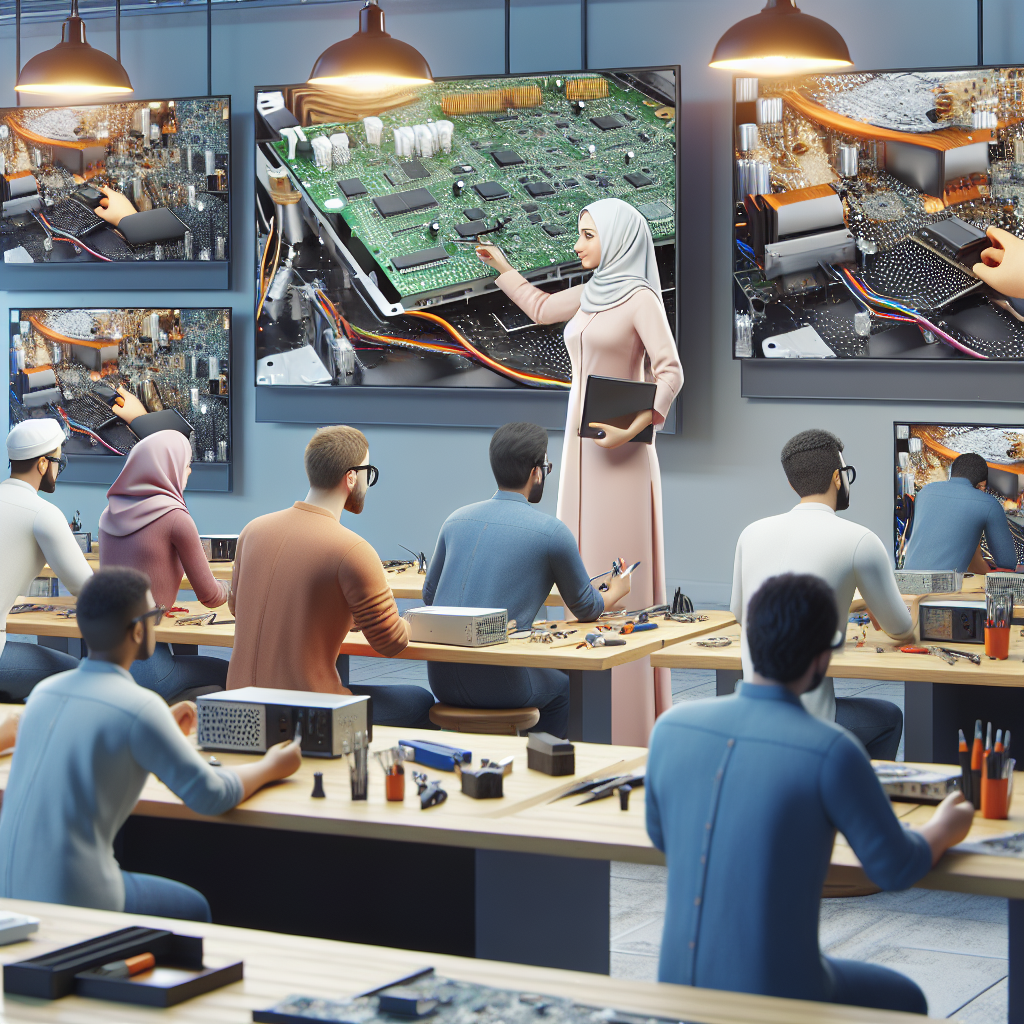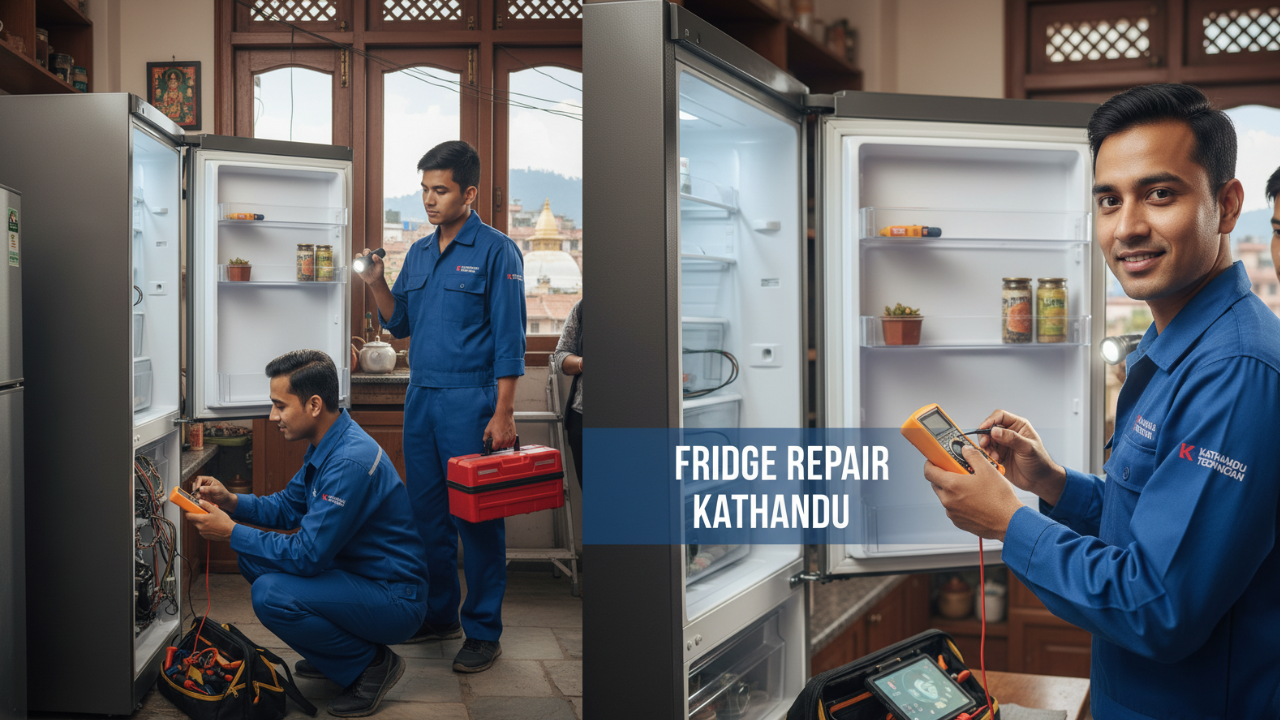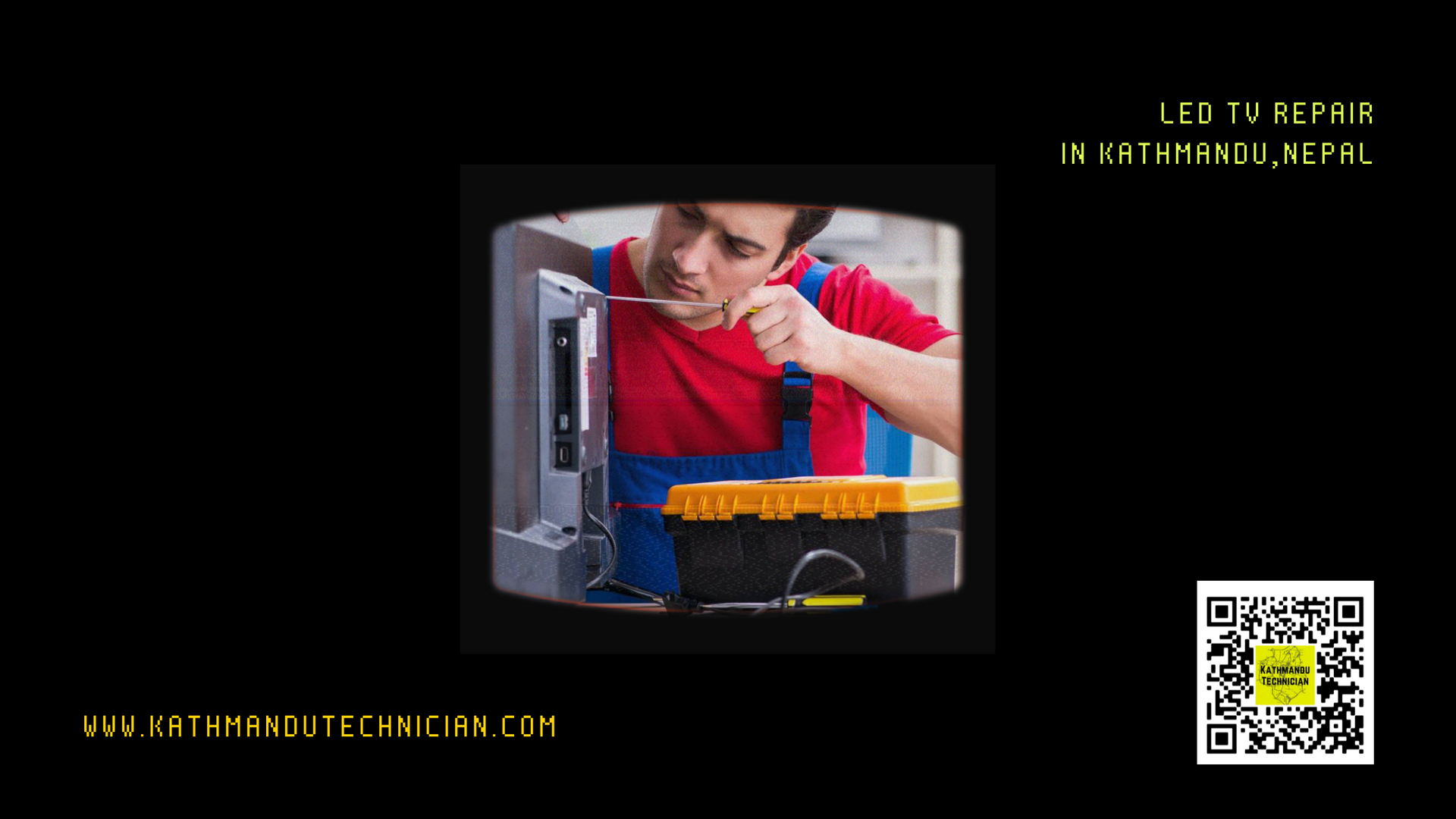Essential Training and Skills Needed for LED TV Repair
LED televisions have rapidly gained popularity over the past decade due to their stunning image quality, slim and sleek design, energy efficiency, and longer lifespan compared to traditional LCD and plasma TVs. However, the complex technology behind LED TVs requires specialized training and skills to properly troubleshoot and repair issues. This blog post will provide a comprehensive guide to the vital competencies needed for LED TV repair and servicing.
Understanding LED TV Technology
LED TVs utilize light-emitting diodes for backlighting rather than cold cathode fluorescent lamps found in older LCD TV designs. This LED backlight system along with other components like power supply boards, timing controller (T-Con) boards, WiFi/Bluetooth modules, etc. make these TVs more sophisticated. Developing expertise on how various parts of an LED TV function and interact is the foundation for repair capabilities.
Key aspects technicians need to grasp include:
- LED backlight systems: structure, driving circuits, local dimming zones. The backlight system provides the light needed to illuminate the LCD panel. Edge-lit vs direct backlight types have different structures. Controlling dimming zones allows for boosting contrast.
- Types of LED TV panels: edge-lit vs direct LED backlight. Edge-lit TVs have LEDs along the edges shining onto the panel whereas direct-lit TVs have LEDs directly behind the panel allowing more control of backlight zones.
- Power supply boards: providing necessary voltages, fusing for protection. Complex low-voltage rails are needed for components. Quality capacitors and fuses prevent further damage.
- T-Con boards: handling signals, controlling backlights, wifi modules, etc. Process video signals, communicate configurations, and regulate backlight driving.
- Diagnosing issues: backlight failures, power problems, T-Con faults, etc. Methodically isolating faults through visual inspection, multimeter measurements, etc.
Gaining a practical working knowledge of components like LED driver ICs, power MOSFETs, LED voltage protection chips, fuses, timing controller chips, etc. allows better troubleshooting. Hands-on experience identifying failed parts and then tracing connections back to root causes is invaluable.
Necessary Tools and Test Equipment
Servicing modern LED TVs requires an array of specialized electronic tools and test gear. Technicians should be proficient in properly operating equipment like:
- Multimeters - Measuring voltages, resistances, and waveforms during diagnosis
- Oscilloscopes - Visualizing signals in power supplies, T-Con boards, etc.
- Thermal cameras - Detecting hot spots from shorted circuits/components
- Soldering irons/stations - Precision soldering of SMD ICs/components
- Hot air stations - SMD rework through heating PCBs evenly
- Diagnostic software - Interfacing with components, running test patterns
Additional helpful gear includes magnifying glasses, anti-static tools, pry tools, tweezers, etc. Assembling a professional-grade toolkit ensures technicians can reliably service issues in on-site and bench repair scenarios.
Hands-on experience using tools to accurately diagnose faults and then successfully implement component-level repairs builds indispensable competencies. Mastery of essential test techniques like voltage measurements across load resistors, capacitor discharges, and waveform analyses enables efficient troubleshooting.
Safety Best Practices
Working with the complex electronics inside LED TVs poses hazards technicians must understand and properly protect against. Key aspects of electrical safety include:
High voltages - Power supply rails can reach hundreds of volts. Avoid contact without personal protective equipment.
Capacitor discharges - Large capacitors hold dangerous charges - safely discharged before handling.
Insulated tools - Prevent current flowing through hands into components/boards.
ESD control - Stop static discharges from damaging sensitive integrated circuits.
Additional best practices include securing LG panel front glass to prevent cracking, supporting neck/back during wall mount installations, ensuring stable positions for awkward products, etc. Developing thorough safety habits protects both technicians and customers.
Hands-on practice repeatedly applying safety measures develops vital muscle memory and understanding. For example, measuring voltage rails and then habitually reconfirming that capacitors are drained reinforces a cautious mindset. Early mastery of critical practices prevents minor oversights from escalating into catastrophic, potentially lethal accidents.
Troubleshooting and Repair Techniques
Methodical fault isolation lies at the core of reliable LED TV servicing capabilities. Technicians should master approaches leveraging visual inspection, multimeter measurements, etc. to trace issues back to root causes. Key troubleshooting techniques include:
Short testing - Isolate shorted circuits blowing fuses/components. Test associated resistors/capacitors.
Resistance measurements - Confirm suspected failed resistors/fuses with diode test mode.
Voltage measurements - Verify the presence of expected rails under load at connectors/ICs.
Current draws - Excessive current indicates short circuits; low current can mean failed system functions.
Signal injections - Inject replacement signals with pattern generators to isolate malfunctioning stages.
Thorough hands-on practice of deliberately introducing common faults like shorted capacitors and then methodically tracking down root causes develops critical investigative skills. Real-world troubleshooting relies on pattern recognition from experience - case studies focused on particular fault scenarios paired with repairs provide this vital knowledge.
For actual repair implementation, competent SMD soldering abilities allow for replacing today’s microscopic components. Specialized tools like hot air stations reflow boards evenly when removing damaged parts. Following ESD-safe handling procedures protects ICs. Careful mechanical disassembly gains access to internal electronics without damaging fragile structures.
Building extensive hands-on experience successfully localizing failed components, accurately soldering replacements, and properly reassembling devices provides the advanced capabilities to maintain LED TV reliability.
Common Problems and Solutions
While issues in LED TVs run the gamut from software glitches to backlight failures, concentrating on repairs for frequent faults accelerates skill development. Technicians should focus time on mastering the identification and correction of faults like:
Backlight failures - Disable individual LED strings to isolate. Replace failed LED strips/driver boards.
Power board faults - Test/replace fuse resistors, filter capacitors, transformer windings, etc.
T-Con failures - Faulty LVDS channel - replace T-Con or troubleshoot outputs.
Software crashes - Factory reset TV, reflash firmware if available. Replace faulty One Chip IC as a last resort.
Methodically troubleshooting real-world instances of these issues solidifies understanding through practice. Hands-on experience effectively identifying backlight failures or accurately tracing shorted power rails back to root components prepares technicians to reliably resolve future similar cases.

Getting LED TV Repair Certification
While self-taught technicians can develop extensive capabilities, formal LED TV repair certifications from schools and manufacturers lend credibility. Top programs provide structured curriculums tailored to efficiently imparting sought-after skills. Coursework combines lectures on theory with intensive hands-on exercises focused on mastery of essential diagnostics and repair techniques.
Many manufacturers like LG, Sony, Samsung, etc. offer product-specific certifications training technicians for servicing their latest offerings. Testing procedures validate candidates' troubleshooting methodologies and repair skills aligned with expertise levels like:
- Associate - Performs preventative maintenance and preliminary diagnostics
- Expert - Complex component-level and board-level repair capabilities
- Master - Top-tier electrical/mechanical troubleshooting competencies
Upon passing written and hands-on certification exams, technicians can advertise badge status to customers seeking qualified repair professionals. However, continual enrollment in recertification classes keeps skills current as products rapidly advance.
Setting Up an LED TV Repair Business
For entrepreneurial technicians, detailed business planning transforms robust LED TV servicing skills into a thriving commercial enterprise. Key steps when establishing an independent repair outfit include:
Estimating startup costs - Calculate expenses for professional tools/gear, advertising, technician training budgets, etc. Include working capital and emergency reserves.
Sourcing parts - Identify wholesale components suppliers with wide inventories and reasonable lead times to enable efficient repairs.
Insurance policies - Necessary liability and workers comp coverage protect repair business assets.
Billing systems - Software tracking repair tickets, technician hours, inventory status, etc. enables accurate customer invoicing.
Pricing structure - Balance competitive shop rates with profit margins based on historical repair time data. Some common line items:
- Diagnostic testing fees
- Flat rate repair brackets
- Hourly technician rates
- Parts with retail markups
Marketing campaigns - Advertise services through directories, flyers, social media, and other channels to build up customer funnel.
Gaining hands-on practice in structuring every aspect of operating an independent shop provides holistic training beyond solely technical competencies. Mastery of critical business, marketing, and customer coordination capabilities creates a sustainable and profitable LED TV repair enterprise.
Hands-on Training Critical for Expertise
While theoretical knowledge provides context for components and fault scenarios, true mastery of LED TV repair stems from extensive hands-on practice. Quality training programs concentrate on building real-world proficiency through activities like:
Guided troubleshooting - Instructors deliberately introduce common faults into training boards. Students methodically trace down root causes using DMMs, oscilloscopes, etc.
SMD soldering - Classes focused on properly using hot air stations, and precision irons to reliably replace micro components.
Case study analysis - Detailed review of real-world repair logs to cement understanding of faults.
Tear-downs - Complete disassembly then reassembly of LED TVs familiarizes internal construction.
Intense hands-on training accelerates the development of intuition and pattern recognition needed for efficient diagnosis. Repetitive soldering builds dexterity in handling miniature connectors and chips. Exposure to faults across entire devices rather than just a single component nurtures end-to-end systematic thinking.
While quality hands-on education is invaluable, costs can limit access for some passionate technicians. Budget-friendly options include detailed online learning programs with remote lab kits for practical exercises. Retailer and manufacturer internships also provide immersive exposure by rotating through service center roles.
Regardless of the specific format, extensive hands-on LED TV repair practice breeds competent, confident technicians.
Diagnostic Tools for Efficient Troubleshooting
In addition to general electronic test tools like multimeters and oscilloscopes, LED TV repair technicians rely on specialized diagnostic gear for rapid fault isolation. Proficiency with equipment like:
Jig boards - Interface ICs to inject signals, and read fault codes and configurations.
Breakout cables - Tap signals from internal system interconnects during operation.
Programmers - Connect to microcontrollers to reflash firmware or confirm the operation.
Video generators - Output HDMI test patterns ideal for detecting subsystem issues.
Develops the capabilities to efficiently interface with LED TV systems for both stimulation and verification. The insights provided accelerate troubleshooting by immediately narrowing the scope of potential issues based on component responses.
Hands-on practice using these diagnostic tools while analyzing the operation of a known-good system builds the pattern recognition required to rapidly isolate misbehaving subcircuits and ICs. For example, over time, slight artifacts observed in test imagery indicate specific T-Con board or LCD panel malfunctions.
Customer Service and Communication Skills
In tandem with technical LED TV repair capabilities, soft skills for positively interacting with customers also ensure business success. Especially for independent repair operations, effective customer management directly enables the building of a thriving servicing outfit.
Communication skills - Clearly explain repair issues and set expectations on pricing/timelines. Update customers regularly on the status of diagnostics and parts orders. Manage frustrated customers upset at malfunctioning but out-of-warranty devices that still represent significant personal investments.
Writing skills - Properly track repair details like performed testing, diagnosed faults, replaced modules/components, and total time spent across work orders in a customer's file for both transparency and consistent pricing.
Organization - Neatly presented shop and vehicle storage solutions to both professionally represent business and enable efficient locating of tools/parts without wasting time rummaging through chaotic messes.
Hands-on roleplaying exercises like mock check-ins/inspections and example written repair logs allow technicians to refine customer-facing talents to convey competence credibility.
Continuing Education
The rapid pace of technological progress requires lifelong learning to remain relevant as an LED TV repair specialist. Ongoing education opportunities include:
New model teardowns - Early hands-on exposure to emerging designs and upgraded modules develop familiarity with internal changes.
Updated diagnostic software and jigs - Tooling needs continual upgrading to interface with newer components and functionality.
Factory training - Manufacturer programs focusing on the latest flagship technologies, protocols, and programming techniques keep expertise sharp.
Online courses - Affordable continued education through remote delivery adaptable across busy professional schedules.
Technical manuals - Updated repair documentation on replacement parts, maintenance procedures, and component-level schematics accelerates maintenance capabilities ramp-up for nascent models and subsystems.
While initial intensive training builds core capabilities, dedicated upkeep across careers cement LED TV repair mastery warranting premium labor rates for such hot expertise.
Conclusion
This guide covers the comprehensive skills vital for LED TV repair spanning necessary electronic and technical knowledge, proper tool usage, safety protocols, troubleshooting methodologies, frequent issue resolution as well and operating an independent servicing business. While mastery requires extensive hands-on practice, strong capabilities in the areas discussed here provide the foundation for an in-demand career in this essential service. Continued education is also critical for keeping expertise aligned with quickly evolving technologies across the competitive consumer electronics landscape. With a dedication to continual skill development, LED TV repair is a rewarding long-term professional path granting independence servicing these vital platforms people rely on for news, entertainment, and connectivity in daily life.
You might also like


